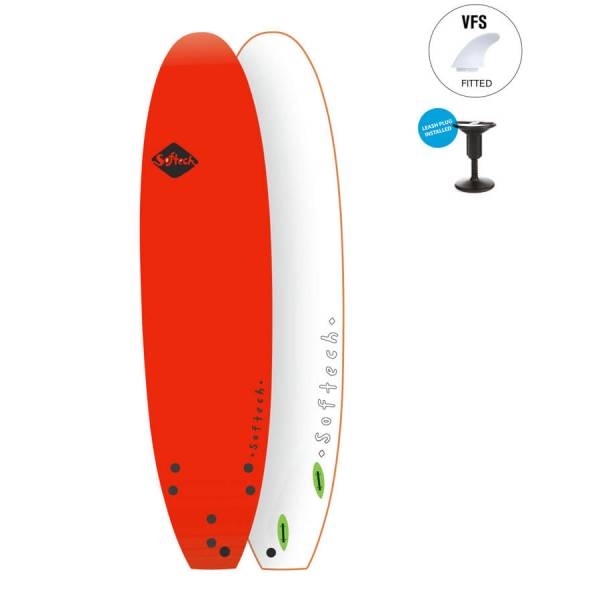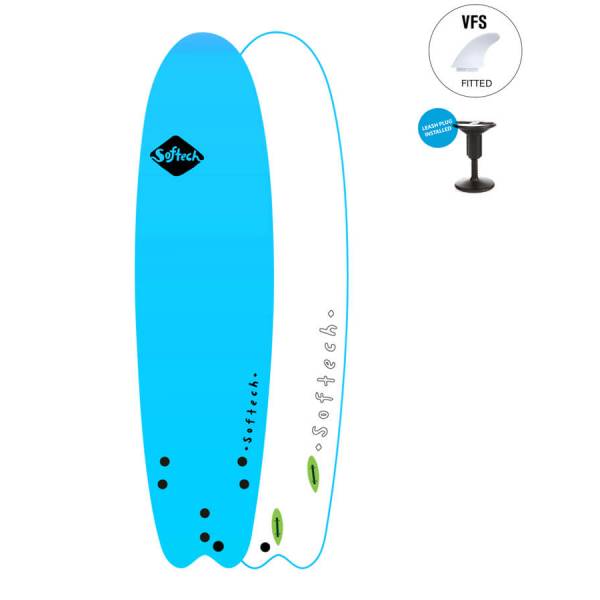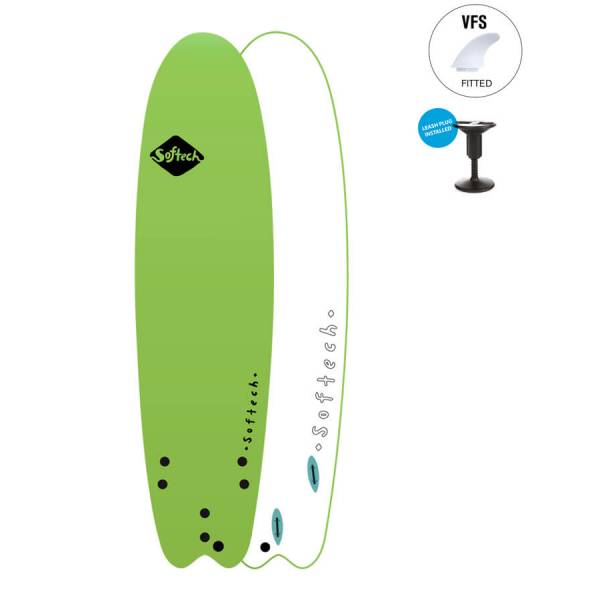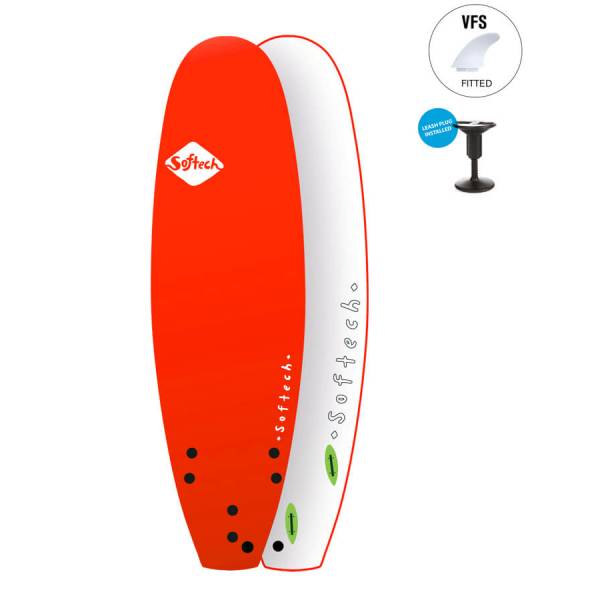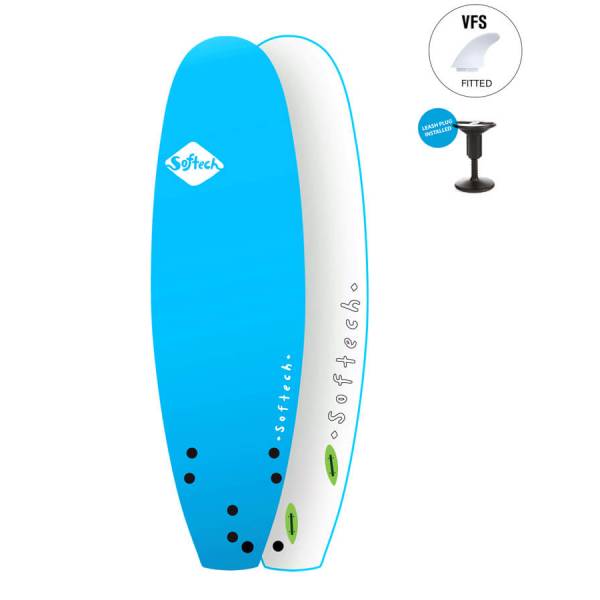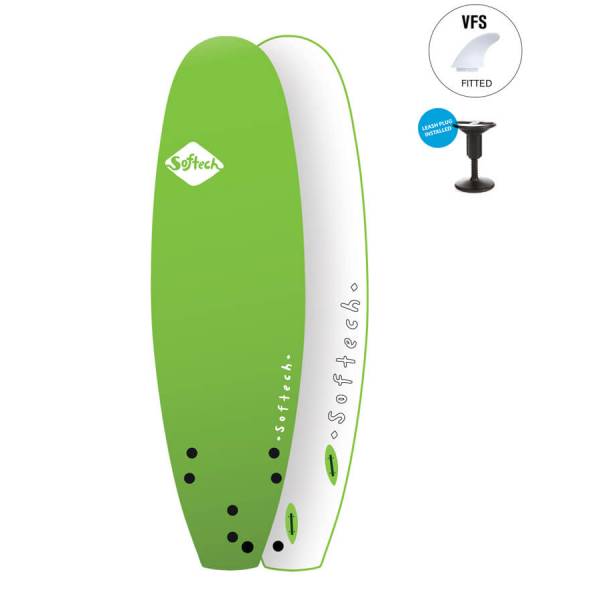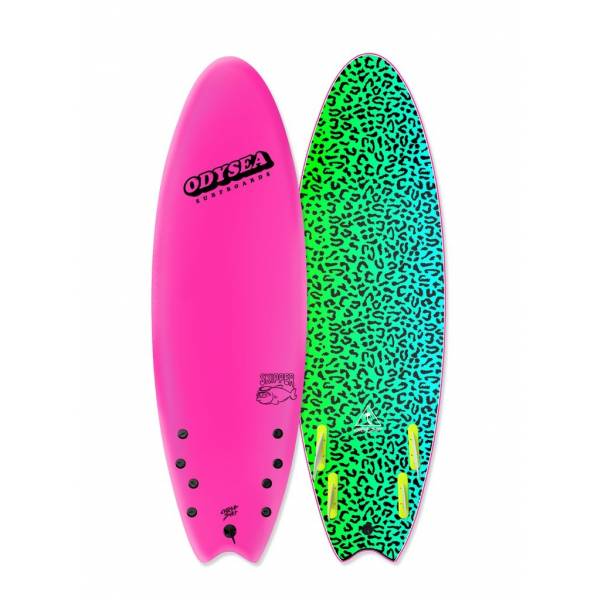Beginner's Guide to Buying a Surfboard
Buying your first surfboard can be a big decision
Surfboards have come a pretty long way from the classic 1900’s redwood plank boards to the intricate precision polyester shapes you can get these days. With more choices that you can imagine for every kind of surfer, there’s a lot to know. Straight off the bat getting the right board can include a range of personal factors like weight, age, ability and fitness level. Luckily, we’ve narrowed down a three key pointers as a good place to start for what you should be thinking about with a board purchase.
Selecting your First Surfboard
Measurement
Measurements are the length, width and thickness of the board. Traditionally boards are identified by their length from nose to tail in feet or inches. The width is the widest part of the board from rail to rail, and the thickness is the measurement of the board from deck to bottom at its thickest point. Measurements, including volume, make up the dimensions of the board, which will determine which board you ride and why.
Three surfboards with three different lengths can have the same volume, so beginner boards don’t need to be crazy long to still be able to surf. But as an easy guide when starting out, just like volume, bigger is better. A longer board will hold a better line in the water and the extra surface area will help to feel less shaky once you get to your feet. Wider boards are more forgiving on feet placement and thickness will give you a board with good durability.
Typically a beginner surfboard is going to be on something 7 to 8 foot or higher, but you still want something you can carry and control out into the water. Depending on your height, weight and ability, something too long can be worse than better.

Volume
Volume is the amount of area (in litres) contained in a surfboard and the best place to start when choosing the right board for a beginner. Best rule to follow: bigger is better. More volumes means the board is more buoyant so it’s better to have more volume and catch waves than too little and not being able to surf your board at all. Higher volume will give you more speed and more stability with less effort to get you going.
These days, you’ll know the exact volume of a board and can calculate the best volume for your body type. Any volume calculator or volume chart will point you in the right direction along with a number of other factors to consider for which board is best.
Material (Shape)
Once you have an idea of what dimensions are going to work for you, you’ll need to work out what shape and material. If you’re really fresh to surfing, foam is your best option. There’s a huge range of soft tops that are ideal for learning. They’re durable, lightweight and best to get you on a wave when you're starting out. A good soft top will have plenty of volume and length, and won’t be breaking the bank either. To learn more about the styles and shapes of foam boards, visit our article Soft Top Surfboards.
Fibreglass boards are considered the most traditional and popular and are easier to turn than a soft top. They are made with a polyurethane core and fibreglass coating. They tend to be more prone to dings and damage than other boards.
EPS / Epoxy is relatively new on the scene in comparison to other materials. They have an expanded polystyrene (EPS) foam core coated in epoxy resin. These boards are known to be more durable and lighter with an easy paddle.
For more information about the different between these two constructions check out our article PU vs EPS Which one is best?.
If you’re starting out but feeling pretty confident or you’ve already tested the waters on a foamie and know you’re looking for something more then there are plenty of options with hard tops. Longboards are a classic. They’re full of volume, length and thickness, typically measuring 8 foot and above. You’ll catch plenty of waves on one and might even find yourself down the route of mastering a longboard.
Mini mals or funboards can work a treat for beginners who want the stability of a longboard but with more manoeuvrability. Think of a classic Malibu longboard but a shorter version. They’re easier to carry and manage out in the water than a longboard but will still be friendly when you’re learning. Mini-mals are perfect if you have the intention of progressing to a shorter board since a soft top can only take you so far.
Retro shapes such as Fish surfboards are generally wider and thicker. These boards adjust between twin, thruster or quad fin setups to give you more drive or stability. If you know you’re ready to get on some bigger waves a fish could be great for you. This board will allow more curves and turns than what longboards and mini-mals allow and are perfect to bridge into performance shortboards.
For more convincing on the benefits of a fish, check out our article Why every surfer should have a fish surfboard.
There are many more different types of surfboards out there for varying surfing styles, abilities and conditions.
End Verdict
There are a lot of boards out there. So you don’t want to waste your time on the wrong equipment.
A big mistake beginners make is picking a board that isn’t for them or bypassing the right dimensions for a shortboard
they’ve seen one of the pros on. We all have to start somewhere. Advanced calculators like the Board Engine can take your age, fitness, ability and board preference into
consideration and give you a range of boards right up your alley. There’s nothing better than getting on a board that’s
right for you.
But let's not forget that your journey into the world of surfing involves more than just the board. As a new surfer, the right gear is your gateway to unlocking an exhilarating experience on the waves. Enhance your connection with the water by equipping yourself with dependable surfboard leashes, providing both safety and convenience as you ride the waves. The art of finding balance and glide is further perfected through the application of surfing wax, giving you the edge to harness every move. And when you're ready to explore beyond the shoreline, reliable surfboard racks ensure your board's safe journey. Don't forget the little things that matter – surf ear plugs guard against discomfort, letting you focus solely on the rhythm of the ocean. So, as you carve your path on the water, let your gear be the catalyst that propels you toward the unforgettable thrill of becoming a surfer.
How to set up your fins





